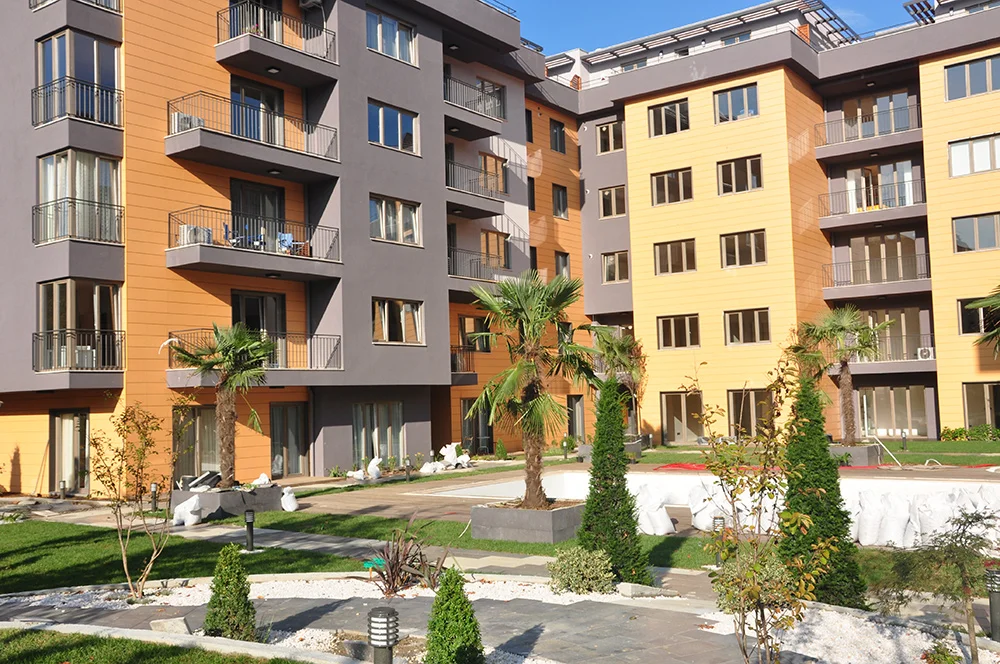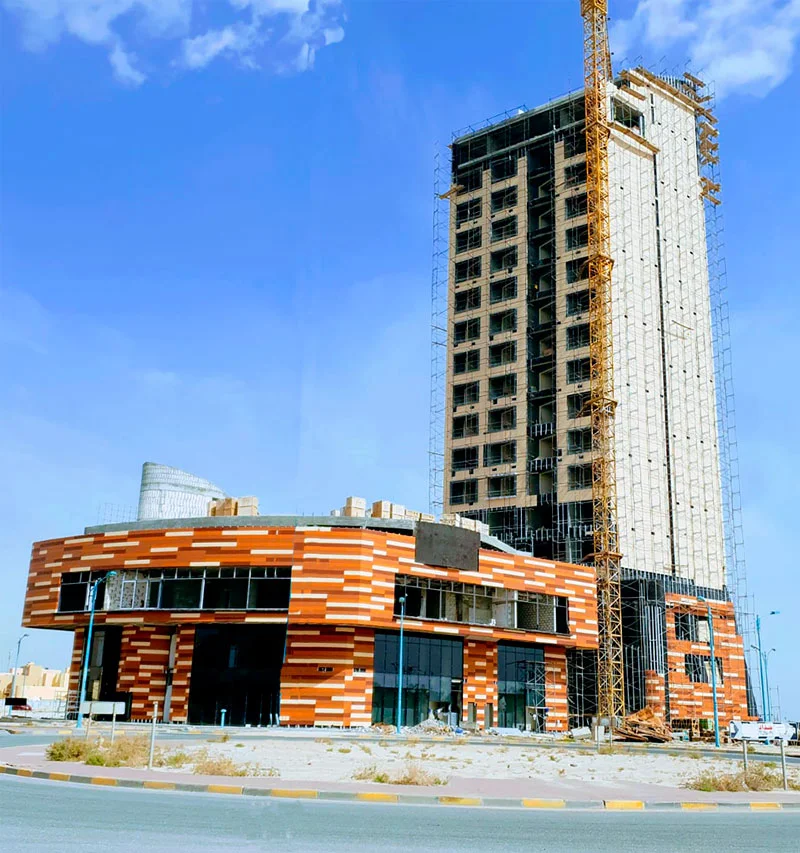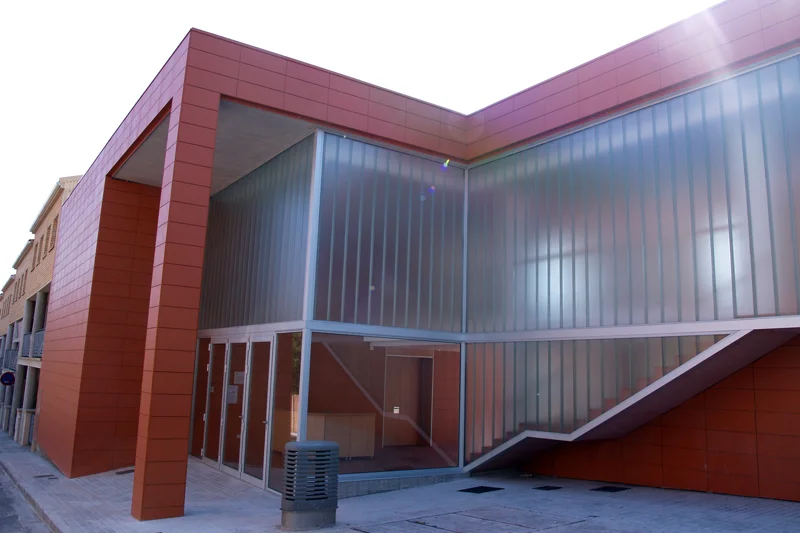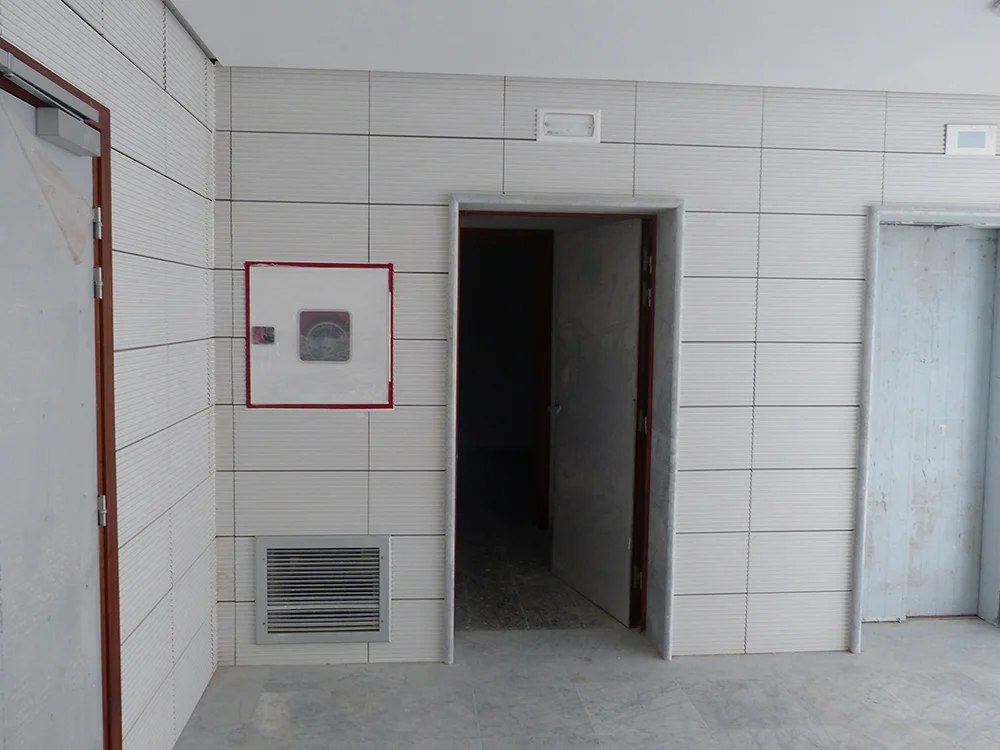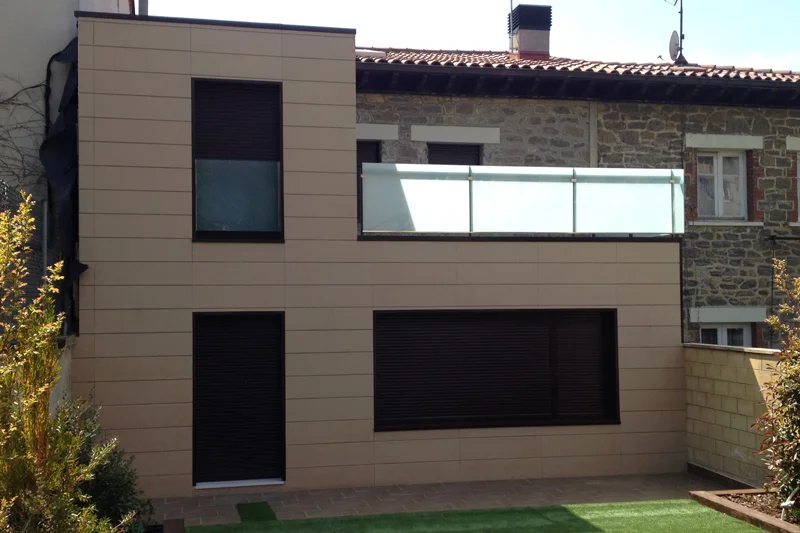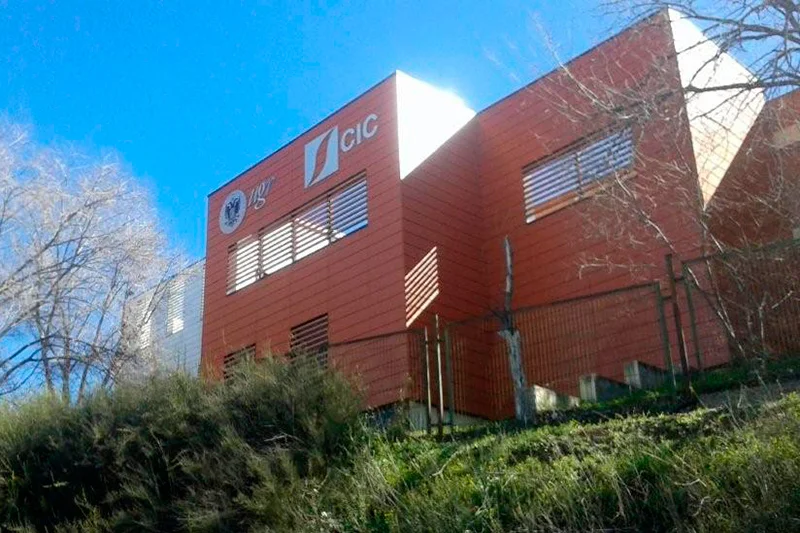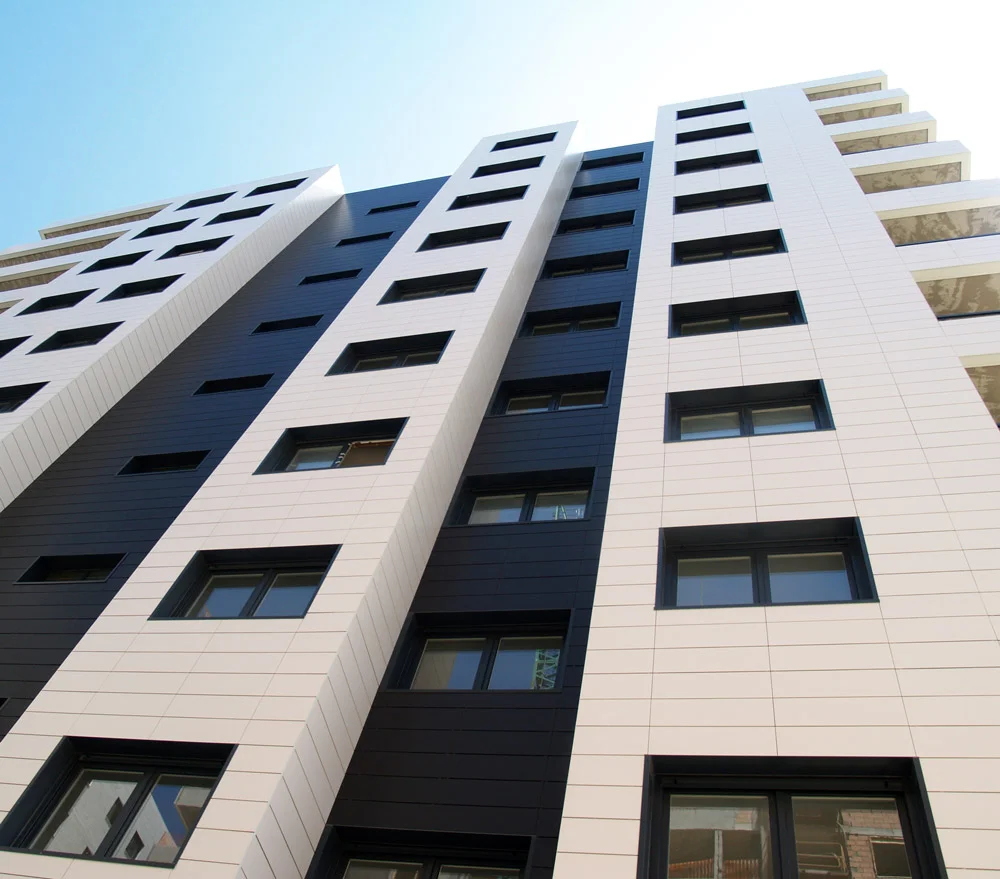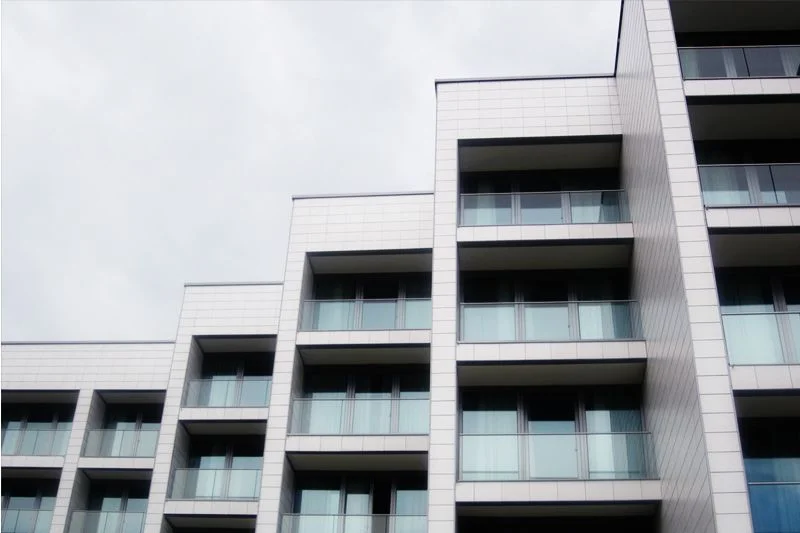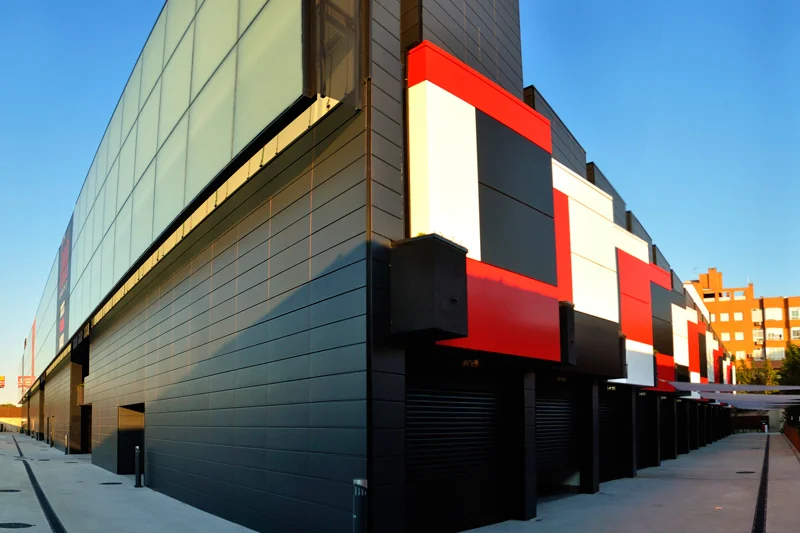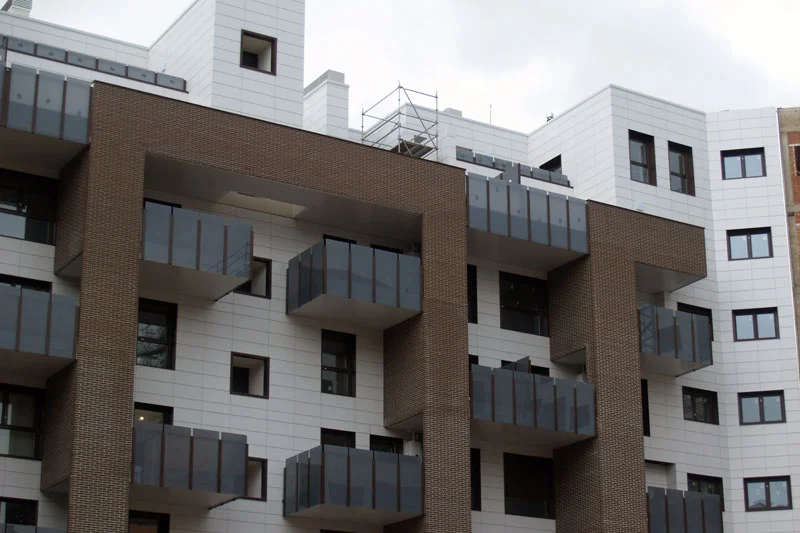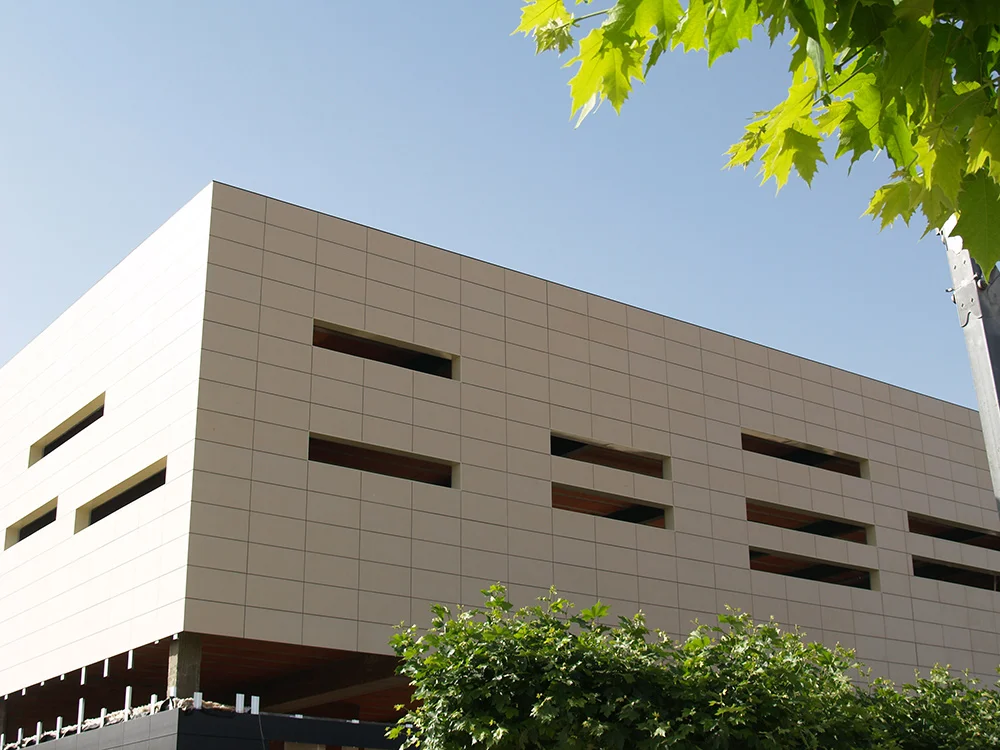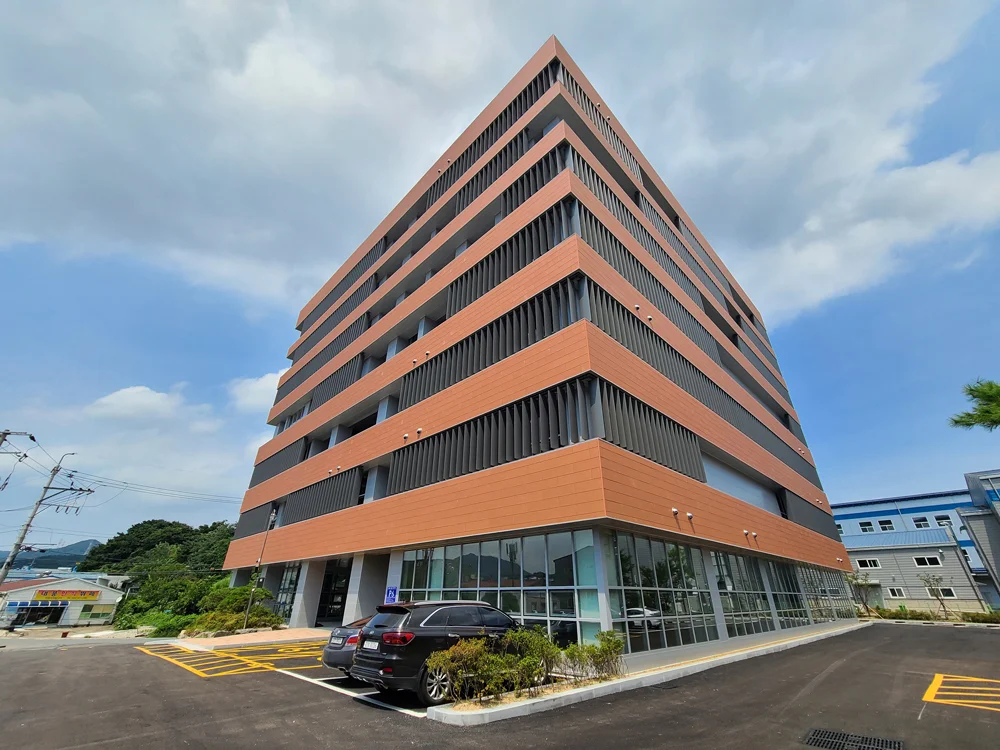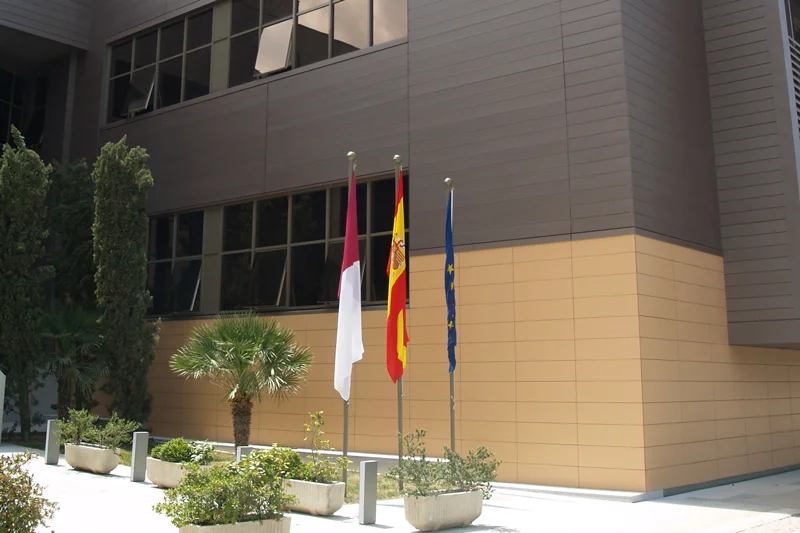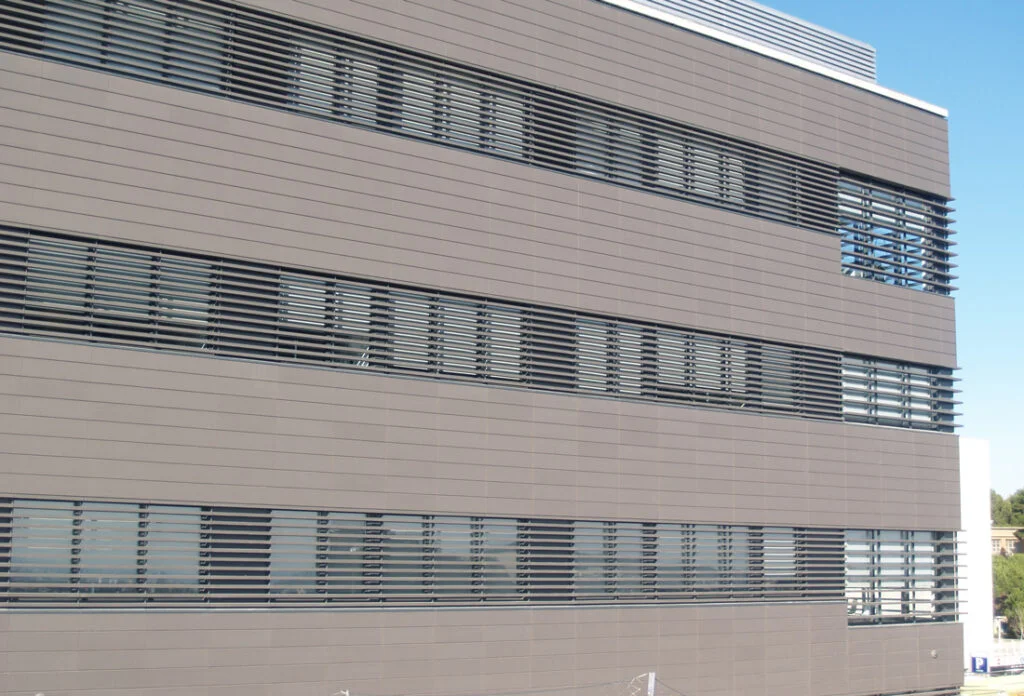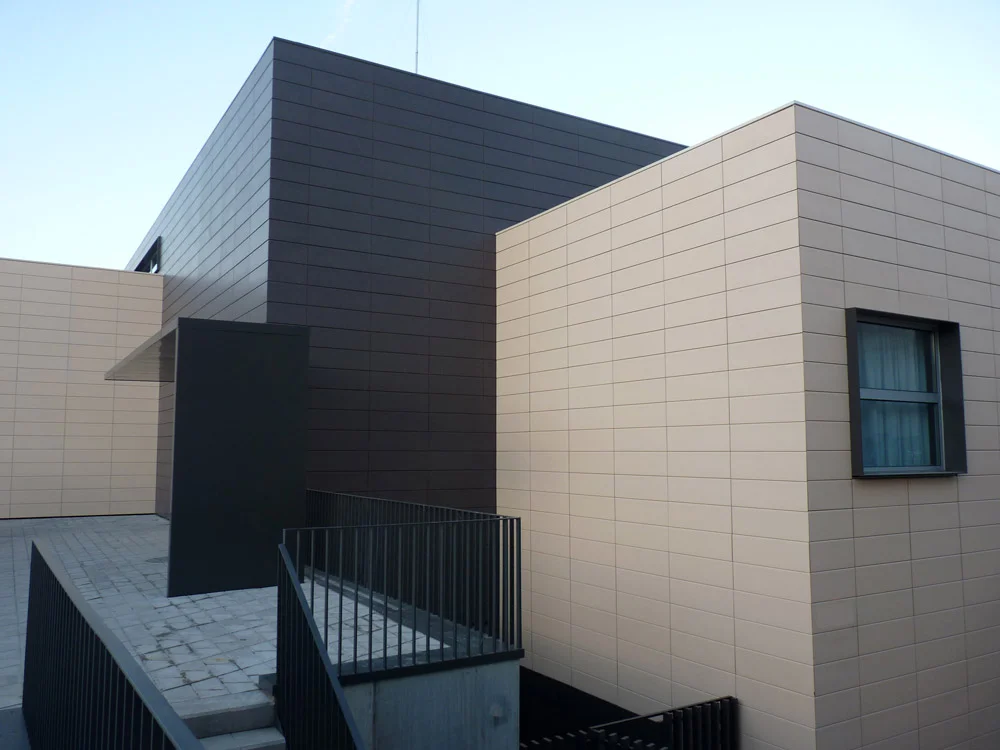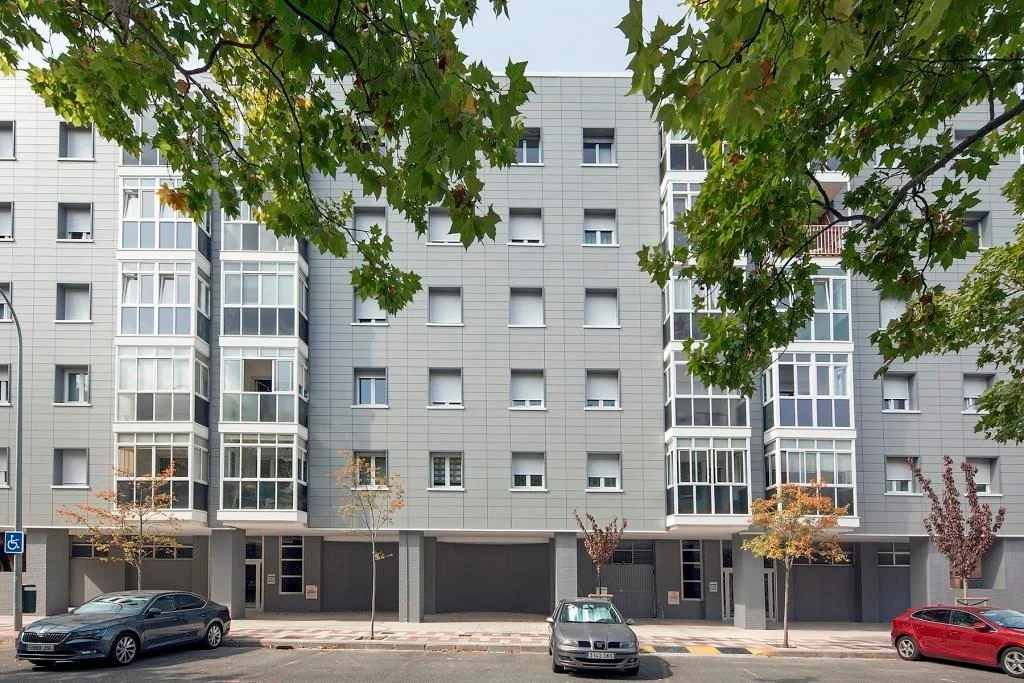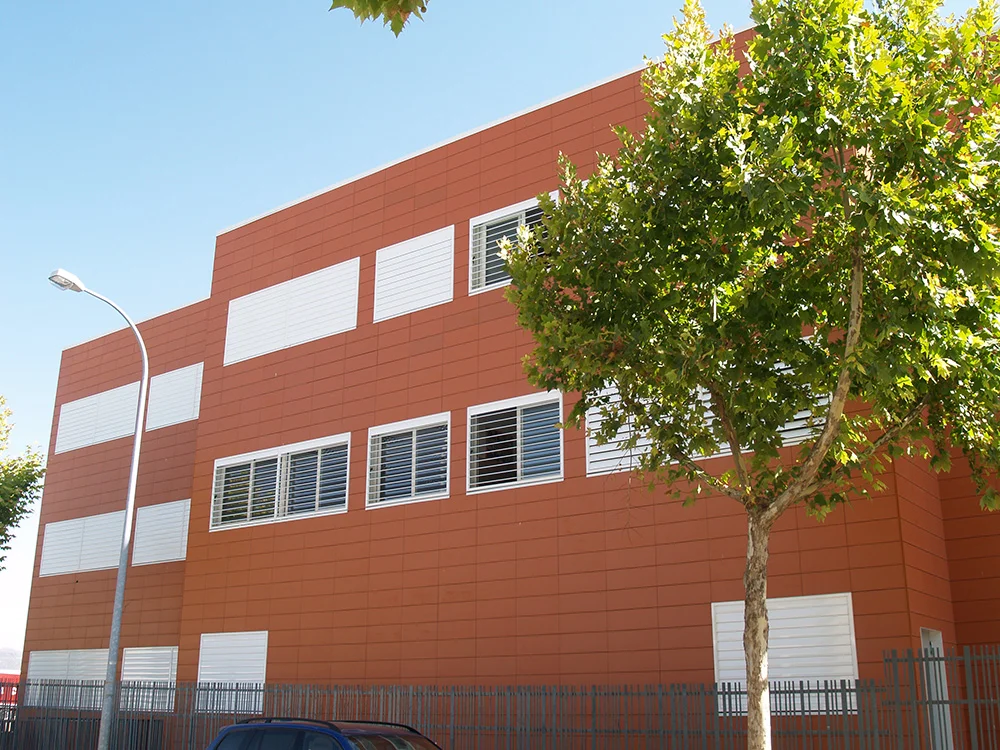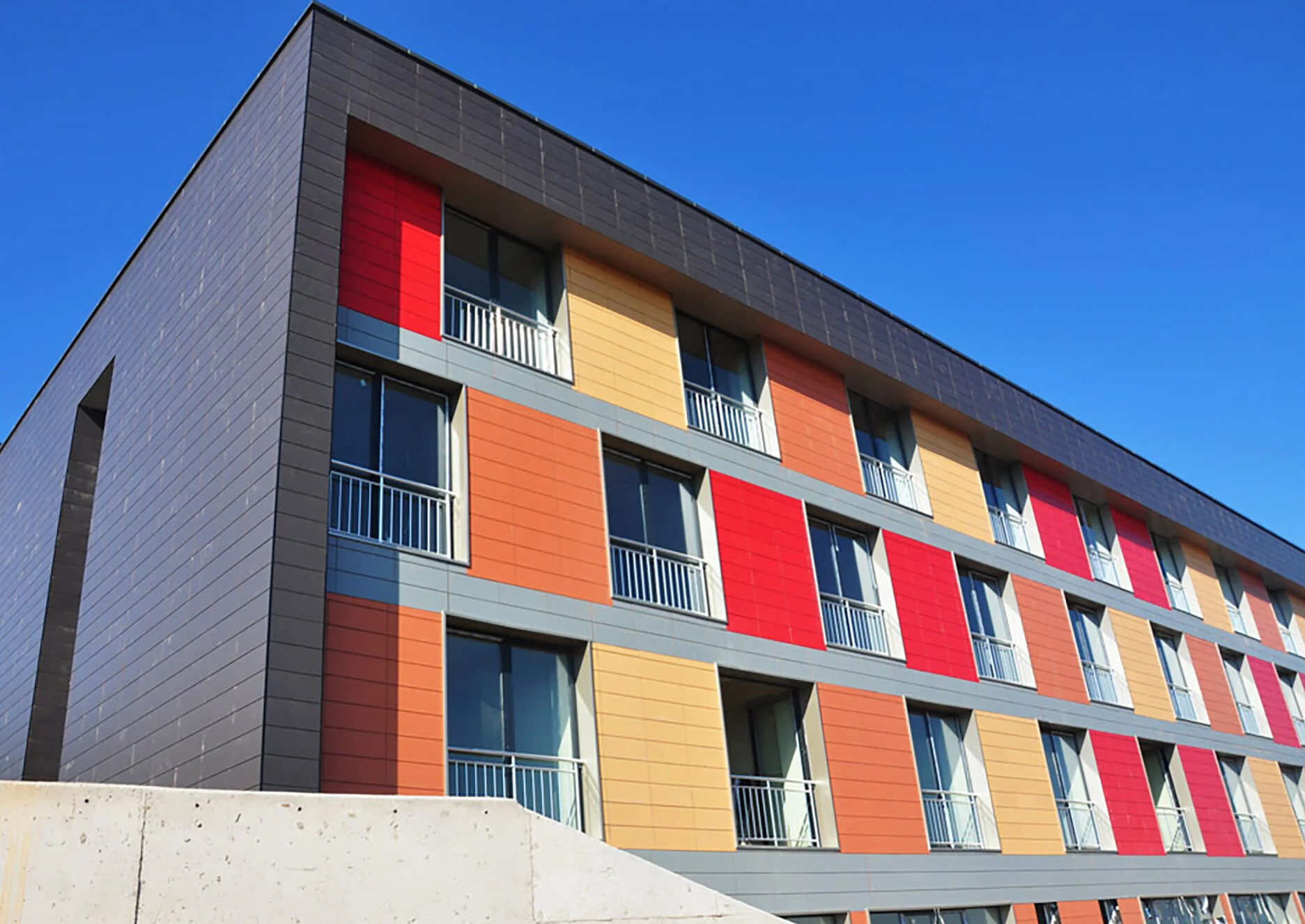Ventilated facades
VENTILATED FACADES
WHAT IS THE FAVEMANC CERAMIC VENTILATED FACADE BY THE GRESMANC GROUP?
The Favemanc ceramic ventilated facade a modern system for finishing building exterior walls. It involves installing a layer of ceramic tile cladding on a special substructure. An air gap (usually 2-4 cm) is left between this cladding and the wall's thermal insulation layer, allowing for free air circulation – hence the name "ventilated."
How does it work?
Air flows into the gap at the bottom of the facade and rises upwards (the so-called chimney effect).
This removes moisture from the structural and insulating layers.
In summer, air movement reduces overheating of the walls, and in winter, it improves insulating parameters because the insulation remains dry and retains its properties.
A ventilated facade is a more advanced, durable, and energy-efficient system than a traditional plastered facade. Its main advantages include protecting insulation and walls from moisture, greater durability, and improving the building's thermal and acoustic comfort.
Favemanc from Gresmanc Group is the quintessence of innovation in modern construction.
This exclusive ceramic system sets trends not only in terms of energy efficiency, but also in terms of cutting-edge design and advanced functionality.
Advantages and features of the ventilated facade
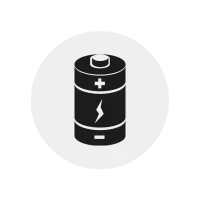
Energy efficiency
The ceramic ventilated facade optimises and reduces energy consumption by eliminating a large part of thermal bridges, which in certain situations allows for energy savings exceeding 30%.

Sustainable development
Our products have a low environmental impact throughout their entire life cycle. The natural clay content means that no toxic waste or environmental emissions are generated during the production, installation, and use of the panels.

High performance
Ceramic plates are characterized by high mechanical strength thanks to their thickness and bubble structure and the lack of the need for mechanical processing, cuts or other changes.

No contribution to the fire
Another important feature is the non-spreading of fire.

Increased acoustic performance
The absence of acoustic bridges reduces noise transmission into the interior, improving insulation. Furthermore, the greater absorption generated by the ventilated chamber helps reduce reverberation time, thus improving acoustic conditions.

Energy efficiency
The ceramic ventilated facade optimises and reduces energy consumption by eliminating a large part of thermal bridges, which in certain situations allows for energy savings exceeding 30%.
What makes us stand out:
Photocatalytic ceramics Facade decontamination
Active Plus Sun is a photocatalytic treatment applied at the nanometer scale that, in the presence of UV-A light, both natural and artificial, triggers a reaction with three primary benefits: antibacterial, decontaminating and self-cleaning properties.
It is important to remember that:
It is non-toxic and free of irritants.
It does not degrade because it does not participate in chemical reactions and is permanently reactivated by exposure to light, both natural and artificial.
It is resistant to deep abrasion
and does not change the appearance or color of the surface to which it is applied.
Decontamination effect
The photocatalytic effect contributes to the reduction of air pollution, primarily affecting nitrogen oxides (NOx):
– By direct action: Reduction of harmful gaseous substances (nitrogen oxides (NOx) such as benzene, toluene, etc.) produced by human activity (industry, automotive, heating, etc.). Degradation of macromolecules (NOx) is laboratory-certified in accordance with the EN 221971 standard.
– By indirect action: By destroying ozone precursor pollutants (NOx), forming ozone (O3).


Antibacterial effect
Active Plus Sun treatment works by breaking down microorganisms such as Escherichia coli and Staphylococcus and preventing the formation of biofilm in which these organisms typically thrive, eliminating unpleasant odors and toxic fumes.
Self-cleaning effect
Another property of Active Plus Sun is its hydrophilicity, which prevents dirt from adhering to the ceramic coatings to which it has been applied.

Certificates
Favemanc's ventilated ceramic facade meets the most stringent standards to meet the requirements of any project, and our certifications speak for themselves
CE

CE
It has the most stringent certifications at all stages of the production and design process, as well as those required for final products. The CE mark signifies the product's compliance with the Community directives required by the manufacturer, as well as the product's compliance with Community regulations governing its production.

DAP
Our ceramic tiles are DAPcons® certified, which awards them the highest sustainability rating after assessing the environmental impact throughout the product's life cycle. The goal of Environmental Product Declarations (EPDs) is to support the demand and production of products with a lower environmental impact by providing rigorous and verifiable environmental information.
EPDs enable the dissemination, disclosure, and dissemination of quantitative environmental information about a product's life cycle. This type of EPD covers the product phase (production), building construction, use and maintenance (use phase), as well as demolition, waste treatment, and disposal.
With this EPD, we are taking another step towards standardizing and certifying our products in accordance with the European Construction Products Regulation (ECD) or building certification systems such as LEED or BREEAM.
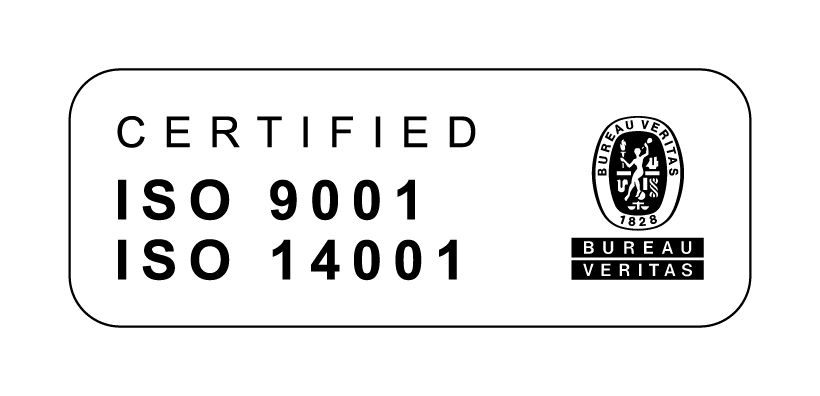
ISO
UNE-EN ISO 9001
Compliance with the UNE-EN ISO 9001 quality management standard, certified by Bureau Veritas.
UNE-EN ISO 14001
Our Quality and Environmental Policy provides a framework for establishing, reviewing, and achieving global and specific objectives, engaging all areas of the company in quality and environmental management.

The Health Product Declaration (HPD)
This declaration establishes in a uniform manner the composition of building materials and the health effects associated with these materials, based on the HPD priority hazard lists contained in the GreenScreen List Translator™ and GreenScreen® tools.

DIT
Our ceramic tiles have been independently certified for their technical suitability for installation in homes and workplaces by a leading institution in the construction industry, the Eduardo Torroja Institute of Building Sciences.
USA

AAMA
AAMA 509-14
Certified by the American Architectural Manufacturers Association according to the Voluntary Test Method for the Evaluation and Assessment of Drained and Rear-Vented Wall Cladding Systems.
AAMA 5011-17
Certified by the American Architectural Manufacturers Association according to the Standard Test Method for Water Transmission through Windows, Curtain Walls, and Doors Using Dynamic Pressure.
ASTM E283-04
Standard Test Method for Air Leakage Rate through Exterior Windows, Curtain Walls, and Doors Under the Effect of Differential Pressure.

ASTM Internacional
ASTM E331-00
Water Penetration into Exterior Windows, Skylights, Doors, and Curtain Walls Due to Uniform Static Air Pressure Difference.
ASTM E330/E330M-14
Standard Test Method for Structural Strength of Exterior Windows, Doors, Skylights, and Curtain Walls Using Uniform Static Air Pressure Difference.
ASTM C1026-13(2018)
Standard Test Method for Freeze-Thaw Cycle Resistance of Ceramic and Glass Tiles.
ASTM E1980-11
Standard Test Method for Calculating Solar Reflectance for Horizontal and Gently Sloped Opaque Surfaces.
ASTM D1929-20
Standard Test Method for Flash Point of Plastics.
ASTM C67
Standard Test Methods for Sampling and Testing Clay Bricks and Structural Tiles.
ASTM C648
Standard Test Method for Fracture Strength of Ceramic Tiles.
ASTM G154
Standard Test Method for Ultraviolet (UV) Fluorescent Lamps for Materials Exposure.
United Arab Emirates

TBW0300729 – TBW0300730
Thomas Bell-Wright International Consultants is a private, multi-accredited engineering firm based in Dubai. It offers independent testing, inspection, and certification (TIC) services, primarily in the construction sector. The firm holds ISO 17025 (testing laboratory), ISO 17020 (inspection), ISO 17065 (certification body), and AC291 (special inspection agency) accreditations from the UK Accreditation Service (UKAS), US International Accreditation Service (IAS), Emirates International Accreditation Centre (EIAC), Gulf Accreditation Centre (GAC), and Emirates National Accreditation Scheme (ENAS).
Designs of ventilated ceramic facades
From residential buildings to commercial and public complexes, our ventilated ceramic facade solutions offer exceptional aesthetics and the ability to adapt to any architectural style, helping to create buildings with a unique personality and character.





